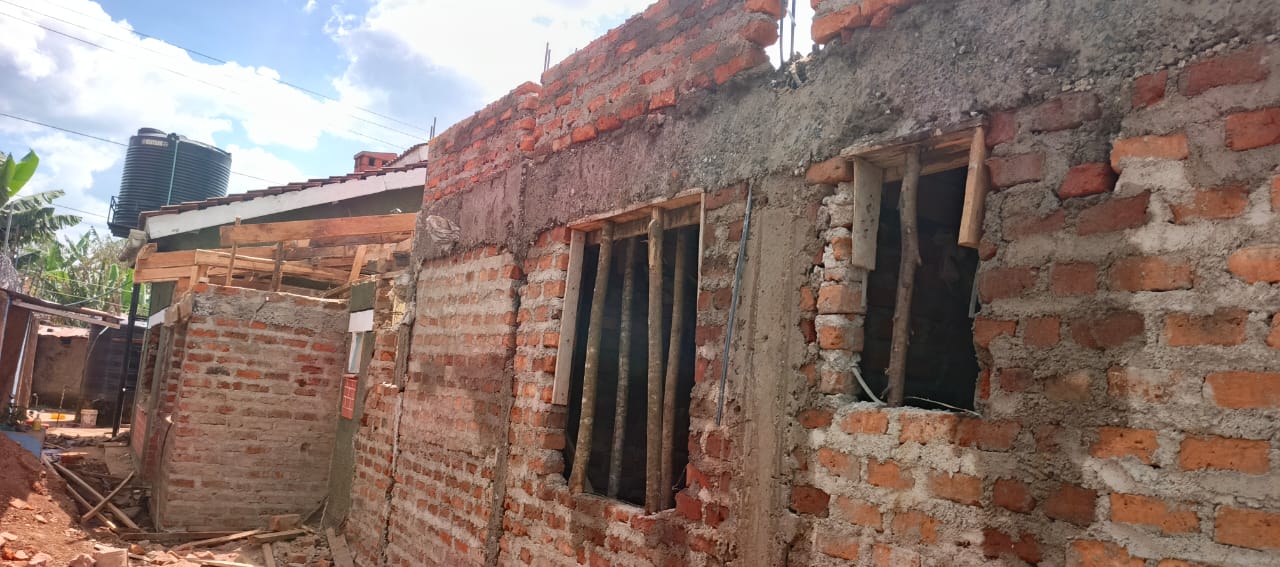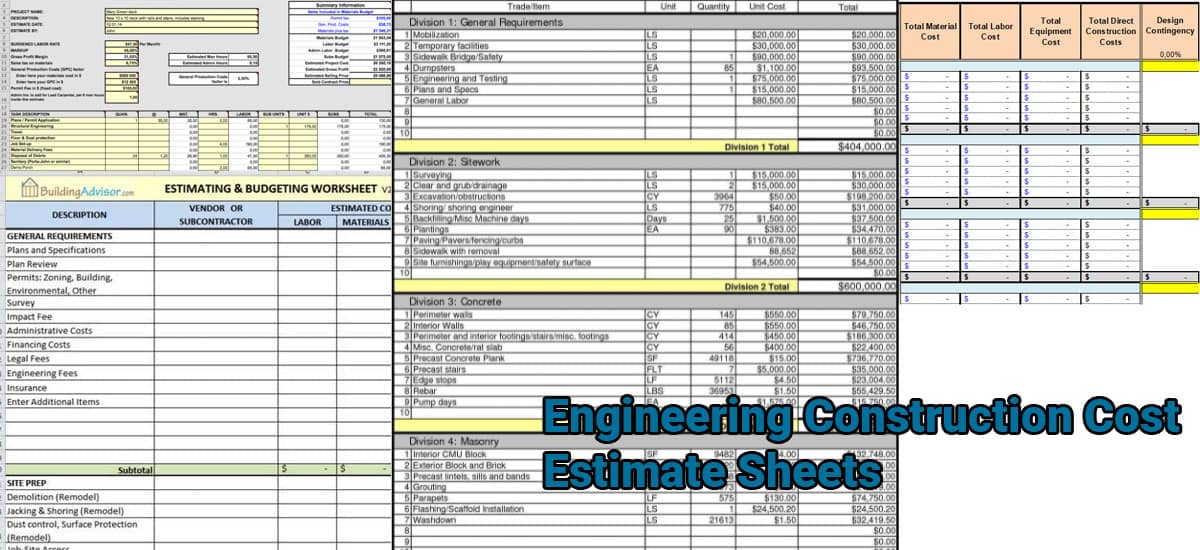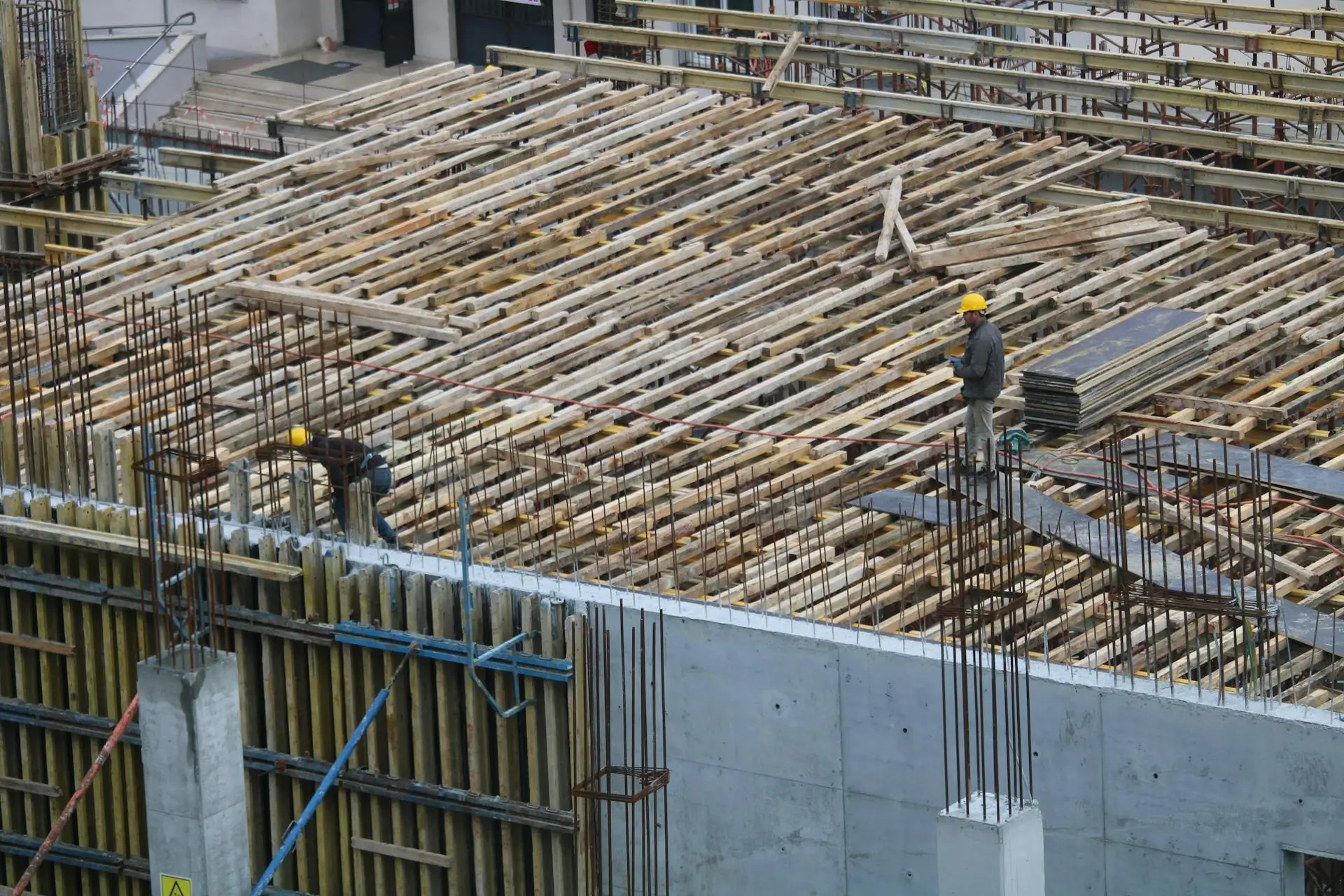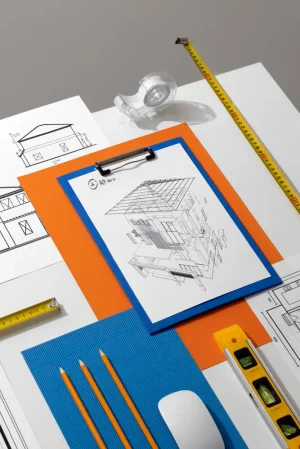I. Introduction
A. Brief Overview of the Housing Market in Kenya
The Kenyan housing market is a dynamic and rapidly evolving landscape, reflecting the nation’s growth and changing demographics. With urbanization on the rise and an increasing population, the demand for innovative and practical housing solutions has never been more crucial. As the country strives for economic development, the housing sector plays a pivotal role in shaping the living conditions and lifestyles of its citizens.
Related post: Why the Design and Build Concept is Ideal for Private Developers
B. Importance of House Design in the Kenyan Context
In the context of Kenya, house design is not merely an aesthetic consideration but a fundamental aspect that influences the quality of life. The design of a house goes beyond its visual appeal; it encompasses functionality, cultural relevance, and sustainability. In a country known for its rich cultural diversity and varying landscapes, the significance of thoughtful and purposeful house design cannot be overstated.
Related Post: Choosing the Best House Designs in Kenya
1. Reflecting Cultural Values: Kenyan house designs often draw inspiration from the diverse ethnic groups present in the country. Whether it’s the intricacies of Swahili coastal architecture or the functional simplicity of traditional Maasai dwellings, each design reflects cultural values and heritage.
2. Adapting to Socioeconomic Realities: Understanding the socioeconomic dynamics is essential in house design. In a country with a mix of urban and rural populations, the design must be adaptable to different lifestyles, income levels, and accessibility to resources.
3. Enhancing Livability: Kenya’s climatic variations, from the coastal regions to the highlands, necessitate designs that consider environmental factors. Efficient use of space, proper ventilation, and the integration of sustainable practices are integral to enhancing the livability of homes.
4. Contributing to Economic Growth: Beyond providing shelter, the housing sector contributes significantly to the economy. Innovative designs can stimulate construction activities, create job opportunities, and spur the growth of related industries.
In this article, we delve into the diverse world of house designs in Kenya, exploring the trends, challenges, and the pivotal role that design plays in shaping the present and future of the nation’s housing landscape. From the bustling urban centers to the serene rural landscapes, the importance of thoughtful house design resonates across Kenya’s varied terrains.
II. 4 Bedroom House Designs in Kenya
A. Definition and Significance of 4-Bedroom Houses
In the realm of residential architecture, 4-bedroom houses hold a special place, often considered a symbol of spaciousness, comfort, and a certain level of affluence. The significance of a 4-bedroom house in the Kenyan context goes beyond sheer size; it addresses the evolving needs of modern families. As households grow and lifestyles change, these designs offer a versatile solution, providing ample space for families to live, work, and entertain.
B. Popular Architectural Styles for 4-Bedroom Houses
1. Contemporary Designs
Contemporary 4-bedroom house designs in Kenya embody the spirit of the times, featuring clean lines, open spaces, and a harmonious blend of indoor and outdoor elements. Large windows allow natural light to flood the interiors, creating a bright and welcoming atmosphere. These designs often focus on functionality, incorporating smart home technologies and energy-efficient features.
2. Traditional Influences
In a country rich with cultural diversity, many 4-bedroom house designs draw inspiration from traditional architectural styles. From the intricacies of Swahili coastal designs to the functional simplicity of rural dwellings, these houses seamlessly blend modern amenities with cultural aesthetics. Traditional influences often manifest in the choice of materials, roof styles, and spatial arrangements, creating homes that resonate with a sense of heritage.
3. Modern and Minimalistic Approaches
The trend towards minimalism has made its mark on 4-bedroom house designs in Kenya. Characterized by simplicity, clean lines, and a focus on functionality, these homes prioritize essential elements and avoid unnecessary embellishments. Open floor plans and strategic use of space contribute to a sense of openness and tranquility, creating a modern aesthetic that resonates with those seeking a streamlined lifestyle.
C. Considerations for 4-Bedroom House Designs in Kenya
1. Space Utilization
Efficient use of space is a paramount consideration in 4-bedroom house designs. From well-designed kitchens to versatile living areas, each space must be optimized for functionality, ensuring that the house caters to the diverse needs of its inhabitants.
2. Cultural Aspects
Considering Kenya’s cultural diversity, 4-bedroom house designs often incorporate cultural elements, ensuring that the home reflects the identity and values of its occupants. This could range from architectural details to interior decor that pays homage to the rich cultural tapestry of the country.
3. Environmental Considerations
Sustainability is a growing concern in modern architecture, and 4-bedroom house designs in Kenya are no exception. From eco-friendly construction materials to energy-efficient systems, these houses often integrate environmentally conscious features, aligning with global efforts towards a more sustainable future.
In exploring the world of 4-bedroom house designs in Kenya, it becomes clear that these homes are more than just structures; they are reflections of evolving lifestyles, cultural identities, and a commitment to creating spaces that enhance the quality of life for their inhabitants.
Related Post: 4 Excellent House Designs in Kenya and Cost of Building
C. Considerations for 4-bedroom house designs in Kenya 1. Space utilization 2. Cultural aspects 3. Environmental considerations D. Case studies of successful 4-bedroom house designs in Kenya
C. Considerations for 4-Bedroom House Designs in Kenya
1. Space Utilization
Efficient use of space is a crucial consideration in the design of 4-bedroom houses in Kenya. The layout should prioritize functionality, ensuring that each room serves its purpose without compromising on comfort. Smart storage solutions, multipurpose furniture, and open floor plans are common strategies employed to make the most of available space.
2. Cultural Aspects
Cultural considerations play a significant role in shaping the design of 4-bedroom houses in Kenya. Architects often integrate cultural elements that reflect the diverse heritage of the country. This could involve incorporating traditional building materials, respecting local design aesthetics, or creating spaces that align with cultural practices. The goal is to ensure that the house becomes a harmonious extension of the cultural identity of its residents.
3. Environmental Considerations
As sustainability becomes a focal point in modern architecture, 4-bedroom house designs in Kenya are increasingly incorporating environmental considerations. This involves using eco-friendly construction materials, implementing energy-efficient systems, and designing spaces that harness natural light and ventilation. Rainwater harvesting, solar panels, and green roofs are among the features that contribute to a more environmentally conscious approach.
D. Case Studies of Successful 4-Bedroom House Designs in Kenya
1. The Coastal Elegance Residence
Architectural Style: Contemporary with Swahili Influences
Situated along the Kenyan coast, this 4-bedroom house seamlessly blends contemporary design with Swahili coastal influences. The use of locally sourced materials, such as coral stone, not only adds to the aesthetic appeal but also reflects a commitment to sustainable building practices. The house is designed with large windows and open spaces to capture the refreshing sea breeze, promoting natural ventilation.
2. The Maasai Heritage Home
Architectural Style: Modern Minimalism with Traditional Touches
Nestled in the heart of Maasai land, this 4-bedroom house strikes a balance between modern minimalism and traditional Maasai design elements. The use of earthy tones, tribal patterns in decor, and a courtyard design that allows for communal gatherings showcase a thoughtful integration of modern living with cultural identity.
3. The Eco-Friendly Oasis
Architectural Style: Sustainable Modern Design
This 4-bedroom house, located in a suburban setting, exemplifies a commitment to environmental considerations. From its energy-efficient appliances to rainwater harvesting systems, the design prioritizes sustainability. The house seamlessly integrates with the surrounding greenery, featuring a garden roof that not only provides insulation but also contributes to the overall ecological balance.
These case studies highlight the versatility and adaptability of 4-bedroom house designs in Kenya, showcasing how architects navigate space, culture, and environmental consciousness to create homes that resonate with both modern needs and traditional values.
III. Key Features of House Designs in Kenya
A. Architectural Diversity
1. Regional Variations
Kenya’s architectural landscape is a tapestry woven with regional variations, each reflecting the unique characteristics and cultural influences of its locality.
- Coastal Regions: Along the coastal areas, house designs often feature Swahili architectural influences, characterized by intricate carvings, coral stone construction, and airy designs to combat the humid climate.
- Central Highlands: In the highlands, where the climate is cooler, houses may adopt designs that prioritize warmth, with features like pitched roofs and extensive use of wood.
- Rural Areas: Rural house designs are often shaped by the availability of local materials. Traditional thatched roof huts are still prevalent in some regions, showcasing a deep connection to cultural roots.
2. Urban vs. Rural Designs
The distinction between urban and rural house designs in Kenya reflects the diverse lifestyles and needs of the population.
- Urban Designs: In cities like Nairobi and Mombasa, modernity and functionality take center stage. High-rise apartments, contemporary townhouses, and sleek designs are prevalent, catering to the demands of urban living.
- Rural Designs: Rural areas may see more traditional and practical designs. Homes are often designed to facilitate communal living, with considerations for agricultural activities and a connection to the natural surroundings.
B. Integration of Traditional and Modern Elements
Kenyan house designs seamlessly blend traditional and modern elements, creating homes that honor heritage while embracing contemporary lifestyles.
- Traditional Materials: Many houses incorporate traditional materials like mud, thatch, and stone, not just for aesthetic reasons but often due to their natural insulation properties and sustainability.
- Modern Amenities: At the same time, modern amenities are integrated, ranging from energy-efficient solutions to smart home technologies, ensuring that residents can enjoy the best of both worlds.
C. Sustainability and Eco-Friendly Designs
As environmental consciousness grows, house designs in Kenya are increasingly embracing sustainable practices.
- Use of Local Materials: Architects are prioritizing the use of locally sourced and sustainable materials, reducing the carbon footprint of construction projects.
- Energy Efficiency: Incorporating solar panels, rainwater harvesting systems, and energy-efficient appliances contribute to reducing the environmental impact of the house designs.
D. Use of Local Materials and Craftsmanship
Kenyan house designs often celebrate the rich tradition of local craftsmanship and materials.
- Handcrafted Details: Intricate carvings, handmade tiles, and locally crafted furniture are common features that not only add unique character to the houses but also support local artisans.
- Adaptation to Climate: Designs often take into account the local climate, using materials that regulate temperature and provide comfort without excessive reliance on artificial systems.
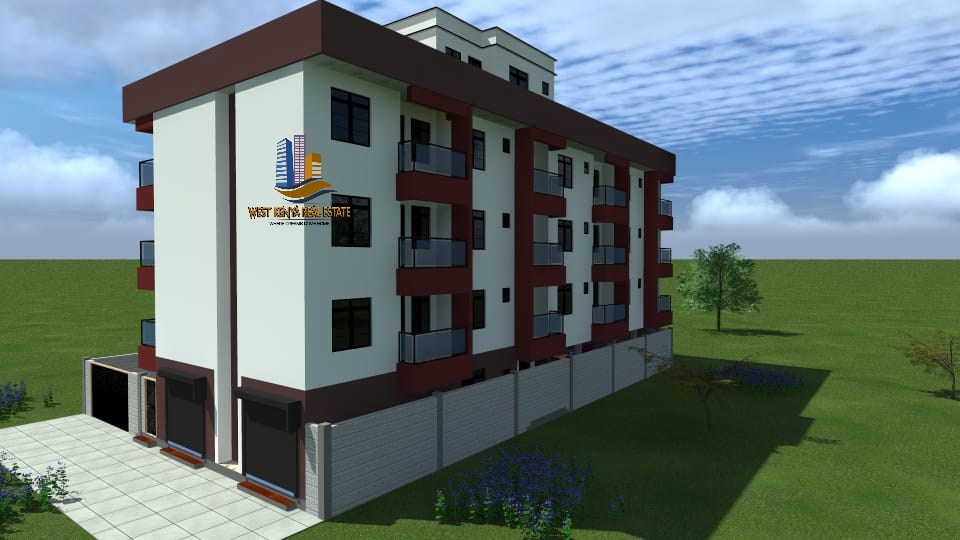




In summary, the key features of house designs in Kenya reflect the country’s rich cultural diversity, the interplay between traditional and modern elements, a commitment to sustainability, and a deep connection to the local context—whether urban or rural. These diverse designs not only provide shelter but also tell the stories of the communities and individuals who inhabit them.
III. Key Features of House Designs in Kenya
B. Integration of Traditional and Modern Elements
Kenyan house designs are a harmonious blend of tradition and modernity, showcasing an architectural evolution that pays homage to cultural roots while meeting contemporary demands.
- Architectural Fusion: Many houses seamlessly integrate traditional architectural elements with modern designs. For instance, a house might feature a traditional thatched roof alongside sleek modern lines, creating a unique and visually striking composition.
- Cultural Symbolism: Elements such as tribal motifs, hand-carved wooden fixtures, or traditional building techniques are often incorporated, not just for aesthetic value, but to honor cultural symbolism and heritage. These features serve as a bridge between the past and the present.
- Adaptive Spaces: Spaces within the house are designed to accommodate both traditional and modern uses. A living room may be equipped for traditional ceremonies while also being adaptable for modern entertainment systems, creating spaces that are versatile and dynamic.
Related Post: 9 Types of Roof Tile for House Designs in Kenya: Creative Options for Your Home
C. Sustainability and Eco-Friendly Designs
Sustainability has become a core principle in contemporary Kenyan house designs, reflecting a commitment to environmental responsibility and energy efficiency.
- Use of Renewable Energy: Many modern houses are equipped with solar panels to harness Kenya’s abundant sunlight, providing an eco-friendly alternative to conventional energy sources. This not only reduces electricity bills but also minimizes the carbon footprint.
- Rainwater Harvesting: Given periodic water scarcity issues, house designs often incorporate rainwater harvesting systems. This sustainable practice ensures a supplementary water source, particularly during the rainy seasons, contributing to water conservation.
- Energy-Efficient Appliances: The integration of energy-efficient appliances, lighting systems, and insulation materials enhances the overall energy performance of the house. This not only reduces utility costs but also lessens the environmental impact.
D. Use of Local Materials and Craftsmanship
The use of local materials and craftsmanship in Kenyan house designs not only connects the structure to its surroundings but also supports local economies and traditional artisanal skills.
- Locally Sourced Materials: Architects often opt for materials that are readily available in the region. Whether it’s using stones from local quarries, bamboo, or sustainably harvested timber, this practice not only reduces transportation costs but also celebrates local resources.
- Craftsmanship as Artistry: Handcrafted details are a hallmark of many Kenyan house designs. From intricately carved doors to custom-designed tiles, these features showcase the artistry of local craftsmen, adding a touch of uniqueness to each home.
- Community Involvement: In some cases, community members actively participate in the construction process, contributing traditional building knowledge and skills. This collaborative approach not only ensures the use of local craftsmanship but fosters a sense of community ownership.
In conclusion, the integration of traditional and modern elements, sustainability practices, and the use of local materials and craftsmanship define the distinctive character of house designs in Kenya. These features not only create aesthetically pleasing homes but also contribute to the conservation of cultural identity and the responsible stewardship of the environment.
IV. Factors Influencing House Designs in Kenya
A. Cultural and Societal Influences
1. Family Structures
In Kenya, house designs are deeply intertwined with cultural norms and family structures, reflecting the dynamic nature of societal relationships.
- Extended Family Living: Many house designs in Kenya are influenced by the prevalent extended family living arrangements. Spaces are often designed to accommodate multiple generations, with separate areas for grandparents, parents, and children, fostering a sense of togetherness.
- Communal Spaces: The design of communal spaces, such as open living areas and shared courtyards, caters to the importance of communal living in Kenyan culture. These spaces serve as focal points for family gatherings and social interactions.
- Flexibility in Design: The adaptability of house designs to changing family structures is crucial. Spaces are often designed with flexibility in mind, allowing for modifications based on evolving family needs, such as accommodating additional family members or adjusting to changes in lifestyle.
Related post: Exploring the Appeal and Cost of 3-Bedroom House Plans Without a Garage: A Focus on House Designs in Kenya
2. Socioeconomic Factors
The socioeconomic landscape significantly shapes house designs in Kenya, influencing everything from the choice of materials to the overall layout of homes.
- Affordability and Accessibility: Economic considerations play a pivotal role in determining the affordability and accessibility of housing. House designs often take into account the financial capacities of potential homeowners, leading to a diverse range of designs that cater to different income levels.
- Urbanization and Modern Lifestyles: Rapid urbanization has led to changes in lifestyle and housing preferences. In urban areas, modern house designs with compact layouts and convenient amenities are prevalent, catering to the fast-paced lifestyles of urban dwellers.
- Innovations in Affordable Housing: Initiatives and innovations in affordable housing are influencing house designs, aiming to address the housing needs of the growing population. This includes the use of cost-effective building materials, modular construction techniques, and government-supported housing programs.
B. Urbanization and its Impact on House Designs
The ongoing process of urbanization in Kenya is a key factor influencing the design of houses, particularly in urban centers.
- Compact Living: Urban areas often witness a trend towards compact living spaces, with the emphasis on utilizing available space efficiently. High-rise apartments, townhouses, and mixed-use developments are common responses to the limited space in urban environments.
- Functional Design for Urban Lifestyles: House designs in urban settings prioritize functionality and convenience. Proximity to amenities, efficient use of space, and considerations for modern urban lifestyles are key factors influencing the design of houses in cities.
- Mixed-Use Developments: Urban house designs increasingly integrate mixed-use elements, combining residential, commercial, and recreational spaces within the same development. This approach caters to the demand for integrated living where residents have easy access to essential services and leisure facilities.
Related Post: 57 FAQ about 4 Bedrooms House Designs in Kenya
C. Government Policies and Regulations
Government policies and regulations also play a pivotal role in shaping house designs in Kenya.
- Zoning Regulations: Zoning regulations influence the type and density of housing in different areas. For instance, certain zones may be designated for residential use, influencing the design and size of homes in those areas.
- Building Codes: Adherence to building codes is essential in ensuring the safety and structural integrity of houses. Designs must comply with these codes, covering aspects such as construction materials, structural stability, and safety features.
- Affordable Housing Initiatives: Government initiatives aimed at providing affordable housing options influence the design and construction of houses. These initiatives often lead to the development of housing projects that cater to a broad spectrum of the population.
D. Technological Advancements in Architecture
Advancements in technology are transforming the field of architecture, impacting the design and construction of houses in Kenya.
- Virtual Design Tools: Architects use virtual design tools and computer-aided design (CAD) software to create and visualize house designs. This technology allows for precise planning and efficient utilization of space.
- Sustainable Technologies: Incorporation of sustainable technologies, such as solar panels, energy-efficient appliances, and smart home systems, is becoming more prevalent in house designs. These technologies enhance the overall efficiency and sustainability of homes.
- Building Materials and Techniques: Technological advancements have led to innovations in building materials and construction techniques. This includes the use of eco-friendly materials, modular construction, and 3D printing, influencing the design possibilities and sustainability of houses.
Related Post: 11 Secrets Why People Love Bungalow House Designs in Kenya
In conclusion, a myriad of factors, including cultural and societal influences, socioeconomic considerations, urbanization trends, government policies, and technological advancements, collectively shape the diverse landscape of house designs in Kenya. Architects and designers navigate these influences to create homes that not only meet the practical needs of residents but also reflect the cultural, economic, and technological contexts in which they are situated.
V. Challenges and Solutions in House Design in Kenya
A. Affordability and Cost-Effective Design Solutions
Challenges:
- Economic Disparities: The economic disparities in Kenya pose a challenge to ensuring affordable housing for a broad section of the population.
- Construction Costs: Fluctuations in construction material costs and labor expenses can impact the overall affordability of housing projects.
Solutions:
- Innovative Construction Techniques: Exploring cost-effective and innovative construction techniques, such as modular construction or the use of alternative building materials, can help reduce overall project costs.
- Government Support: Continued government support through subsidies, tax incentives, and affordable housing initiatives can make homeownership more accessible.
B. Infrastructure Limitations and Their Impact on Design
Challenges:
- Limited Access to Services: In some regions, limited access to essential services like water, electricity, and sanitation can influence the feasibility of certain house designs.
- Transportation Challenges: Poor transportation infrastructure can impact the accessibility and desirability of certain locations for housing developments.
Related Post: BEST BUNGALOW HOUSE DESIGNS IN KENYA
Solutions:
- Integrated Infrastructure Planning: Coordinated efforts between urban planners and architects to integrate necessary infrastructure improvements into housing projects can enhance the overall livability of the area.
- Off-Grid Solutions: Implementing off-grid solutions, such as renewable energy sources and water harvesting systems, can address challenges related to the lack of centralized services.
C. Balancing Aesthetics with Functionality
Challenges:
- Divergent Design Preferences: Balancing diverse design preferences, especially in a culturally rich country like Kenya, can be challenging.
- Space Constraints: The need to optimize space in urban environments while maintaining aesthetically pleasing designs poses a challenge.
Solutions:
- Cultural Sensitivity: Architects can incorporate cultural consultations in the design process to ensure that designs resonate with the preferences and values of the local community.
- Innovative Space Planning: Utilizing innovative space planning techniques, such as multifunctional furniture and open floor plans, can help address space constraints without compromising aesthetics.
D. Community Involvement in Design Processes
Challenges:
- Lack of Community Engagement: Limited involvement of the community in the design process can lead to designs that do not align with the needs and aspirations of the residents.
- Communication Barriers: Effective communication between designers and communities can be challenging, especially in diverse cultural settings.
Related Post: TWO STOREY HOUSE DESIGNS IN KENYA
Solutions:
- Participatory Design Workshops: Organizing participatory design workshops and involving community members in the decision-making process ensures that the final designs reflect the desires and needs of the residents.
- Cultural Liaisons: Employing local cultural liaisons or community organizers who can bridge communication gaps and facilitate meaningful engagement between designers and communities.
In conclusion, addressing the challenges in house design in Kenya requires a multi-faceted approach that considers affordability, infrastructure limitations, the balance between aesthetics and functionality, and active community involvement. By embracing innovative solutions and fostering collaboration, architects and designers can contribute to creating sustainable, culturally sensitive, and affordable housing solutions for the diverse population in Kenya.
VI. Future Trends in House Design in Kenya
A. Technological Advancements Shaping Designs
Anticipated Trends:
- Smart Homes: Increasing integration of smart home technologies, including home automation systems, energy-efficient appliances, and security features, will become more prevalent in house designs.
- Virtual Reality (VR) in Design: Architects and designers may increasingly utilize virtual reality tools for immersive design experiences, allowing clients to virtually walk through and interact with their prospective homes before construction begins.
- Sustainable Construction Technologies: Advancements in construction technologies, such as 3D printing and prefabrication, may gain popularity for their potential to reduce construction time and waste.
B. Sustainable and Green Architecture Trends
Anticipated Trends:
- Passive Design Strategies: Houses will likely incorporate passive design strategies to optimize natural lighting, ventilation, and thermal performance, reducing reliance on artificial lighting and heating or cooling systems.
- Green Roofs and Walls: Increasing use of green roofs and walls for insulation, stormwater management, and biodiversity enhancement, contributing to a more sustainable and environmentally friendly built environment.
- Renewable Energy Integration: Continued growth in the integration of renewable energy sources, such as solar panels and wind turbines, to meet energy needs and reduce the carbon footprint of houses.
C. Innovative Use of Space and Materials
Anticipated Trends:
- Multifunctional Spaces: Designs that maximize the functionality of spaces, with rooms and furniture serving multiple purposes, catering to the evolving needs of flexible and dynamic living arrangements.
- Adaptive Reuse: A rise in the adaptive reuse of existing structures and materials, promoting sustainability by repurposing and revitalizing older buildings for contemporary living.
- Local and Recycled Materials: Increased emphasis on the use of locally sourced and recycled materials to minimize environmental impact and support local economies.
D. Influences from Global Architectural Trends
Anticipated Trends:
- Cultural Fusion: Global architectural trends influencing designs that celebrate cultural fusion, incorporating elements from various architectural traditions and styles.
- Biophilic Design: Growing incorporation of biophilic design principles, connecting inhabitants with nature through the use of natural materials, indoor plants, and designs that mimic natural patterns.
- Minimalism and Simplicity: Continued influence from global minimalist movements, emphasizing clean lines, simplicity, and de-cluttered spaces for a timeless and contemporary aesthetic.
Related Post: LOCAL HOUSE DESIGNS IN KENYA

